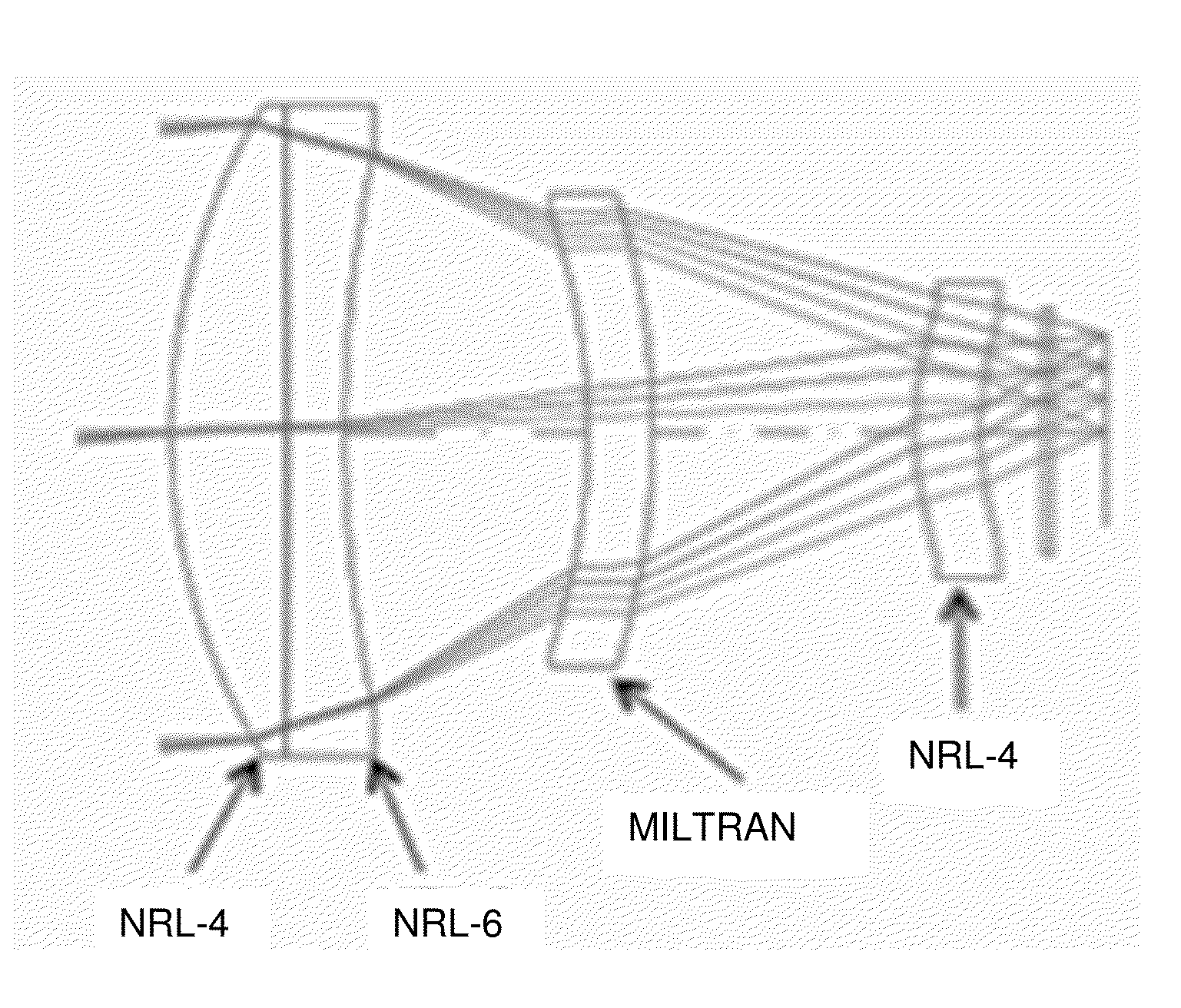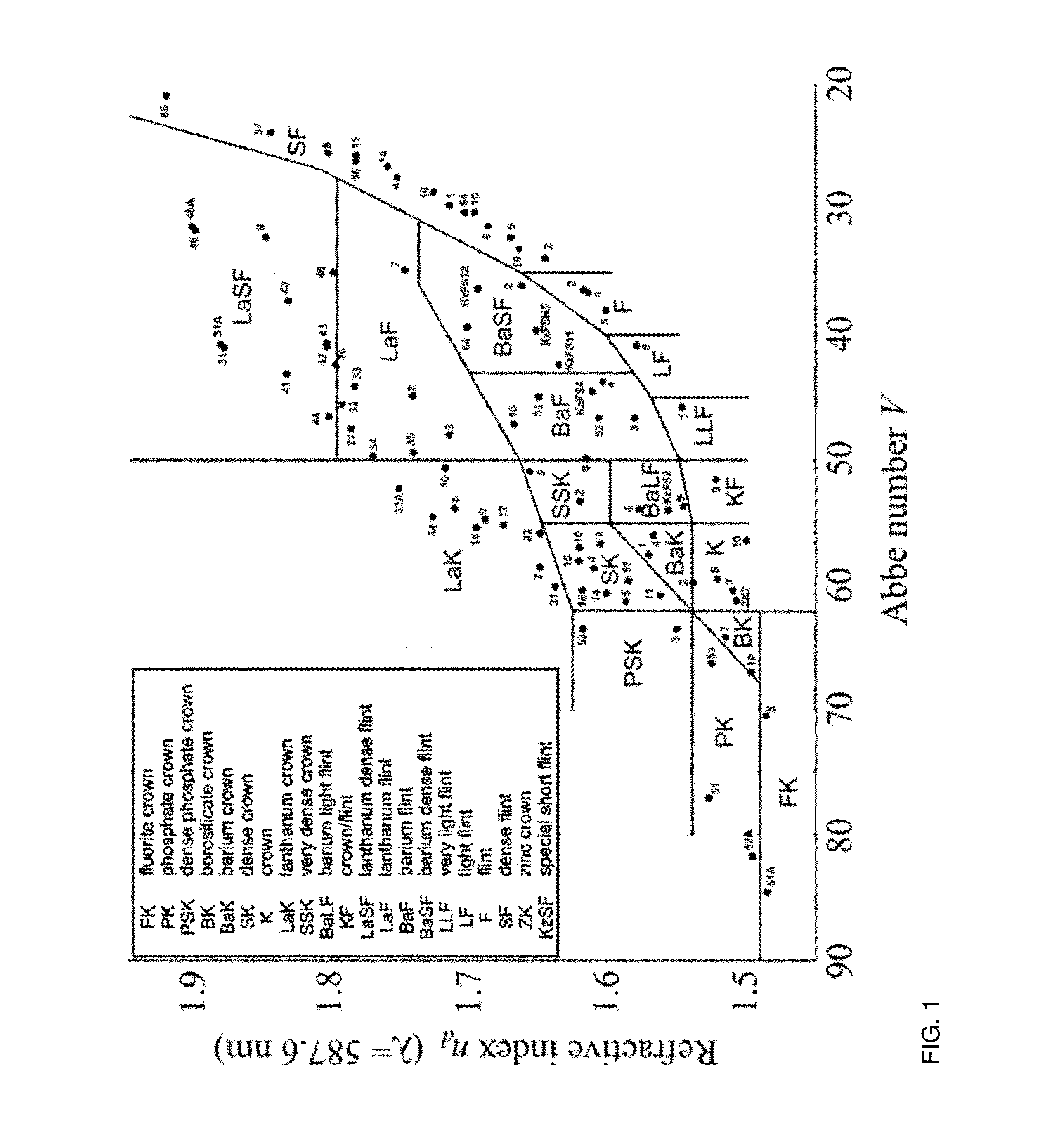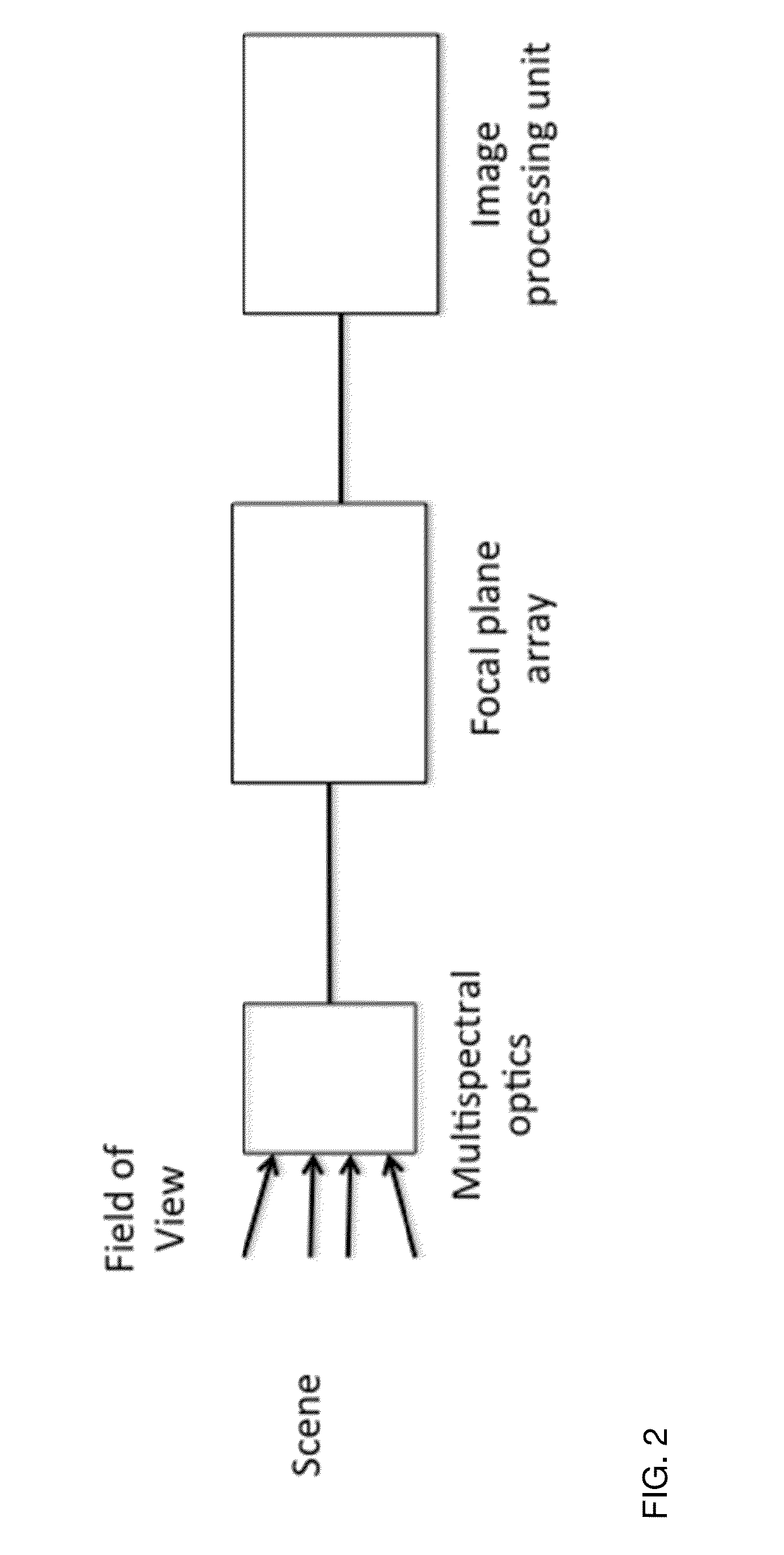Multispectral imaging system comprising new multispectral optics
- Summary
- Abstract
- Description
- Claims
- Application Information
AI Technical Summary
Benefits of technology
Problems solved by technology
Method used
Image
Examples
example 1
Cooled IR Dual-Band (MWIR-LWIR) Imaging Lens Design
[0047]A generic cooled IR design is demonstrated utilizing both a traditional all-crystal design (FIG. 6) and comparing it to a design utilizing the materials of the present invention (FIG. 7). Both of these designs and the design in FIG. 8 utilize the same set of parameters described in Table 3. These relatively simple fixed focal length designs provide a useful comparison of the capabilities of the materials of the present invention. In this case, the MWIR spectrum is chosen to be 3.5-5.0 μm and the LWIR is 8.0-10.0 μm. These values are based on traditional spectral bands for cooled IR systems. All of the designs are also for a common focal length, f / number, and cold shield height of 1.0″. The designs are evaluated as if they are being used with a 12 μm pixel pitch detector.
TABLE 3First order imager specifications for thethree cooled IR dual-band designs.1st Order Optical PropertiesFocal Length66mmF / number2.5EPD (Entrance Pupil Di...
example 2
Uncooled IR Dual-Band (MWIR-LWIR) Imaging Lens Design
[0052]One way to further demonstrate the benefit of expanding the glass map is by designing an imaging system to more challenging performance. In this case, the design was focused on a dual band uncooled lens concept. This results in two changes that complicate the design, and one that simplifies it. The complication lies in going to a faster f / number and a broader spectral band. The faster f / number requires greater power from the lenses, which in general makes it harder to perform the required color correction. The broader spectral band is a result of the broadband nature of an uncooled FPA where the LWIR radiation can generally be observed out to 14 μm. The MWIR spectral band is assumed to be held the same, but the challenge of imaging the extra 4 μm (from 10.0-14.0 μm), is significant as it impacts the selection of materials and their choice for color correction. The lens is simplified by now allowing the aperture stop (no long...
PUM
 Login to View More
Login to View More Abstract
Description
Claims
Application Information
 Login to View More
Login to View More - R&D
- Intellectual Property
- Life Sciences
- Materials
- Tech Scout
- Unparalleled Data Quality
- Higher Quality Content
- 60% Fewer Hallucinations
Browse by: Latest US Patents, China's latest patents, Technical Efficacy Thesaurus, Application Domain, Technology Topic, Popular Technical Reports.
© 2025 PatSnap. All rights reserved.Legal|Privacy policy|Modern Slavery Act Transparency Statement|Sitemap|About US| Contact US: help@patsnap.com



